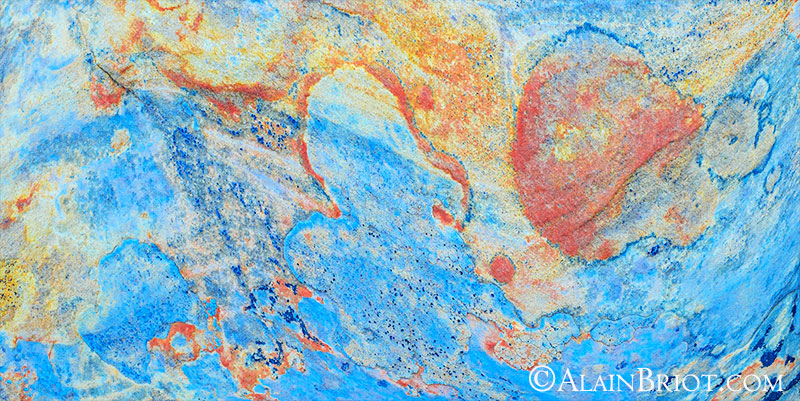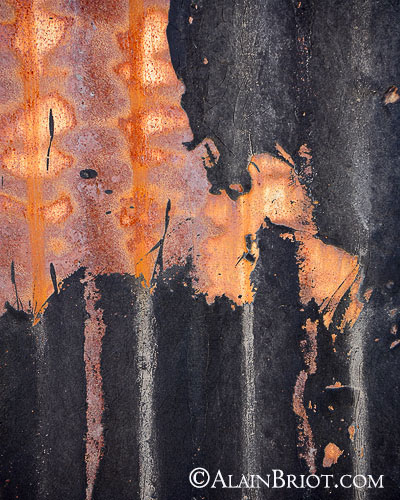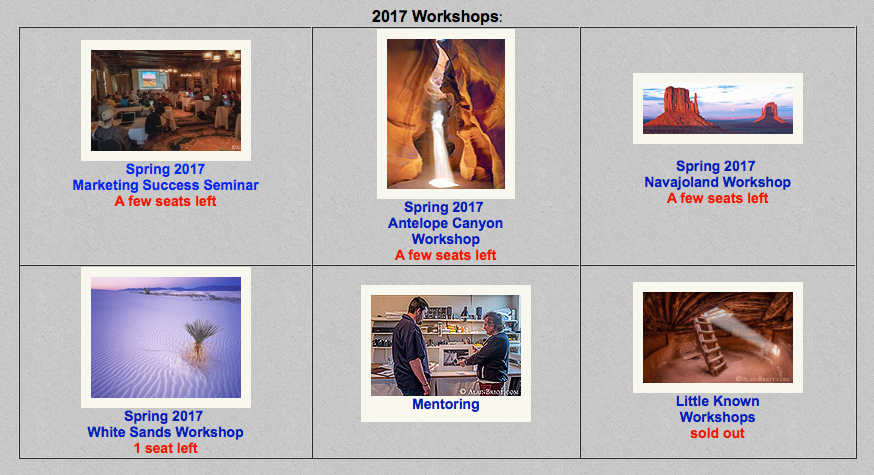

There is no abstract art. You must always start with something.
Afterwards you can remove all traces of reality.
Pablo Picasso
1 – Introduction
Creating an abstract photograph means removing the context in which the subject is found. Doing so leaves us with an image filled with visual information that does not give an indication as to what the original subject was. What the image is about, or of, is up to us to decide. This opens the door to multiple interpretations of the image. Each viewer brings his or her idea regarding what the image is about.
2 – How abstract images are created
In the quote above what Picasso means is that immediate abstraction is not possible because no matter what we photograph, paint, draw, sculpt or otherwise create, we always start with something real. It is only by removing parts of this reality that we can achieve an abstraction. Our role as artists is therefore, to remove reality progressively until we are left with the art alone, distanced from reality by its abstraction, by the removal of part of the thing we started with.
This implies that the key to creating abstract photographs is to see the subject as a series of shapes, colors, patterns or other elements rather than as an actual subject. These shapes, colors, patterns, etc., if they are connected to one another, form a new subject. It is this new subject that interests us. The same shapes, if seen in isolation, without paying attention to how they connect to each other, are abstract. It is these disconnected shapes that we use to create abstract photographs. The more disconnected from the complete object these shapes are, the less they refer to that object and the more abstract the photograph will be.

When you follow this approach a successful abstract image becomes a visual puzzle that viewers have to solve. The riddle presented by this puzzle is simple: what is this? The more difficult it is to solve this puzzle, the more intriguing the photograph becomes. If the puzzle cannot be solved then the image remains a mystery. All the viewer takes with him are the shapes that compose the image. Over time the inability to solve the mystery fades away in the viewer’s mind. The original subject becomes unimportant. Instead of trying to find out what the subject is the viewer immerses himself in the aesthetic aspects of the image. It is when aesthetics take over subject matter, both for the artist and for the viewer, that true abstraction takes place.
3 – Thinking about things rather than looking at things
An abstract photograph calls for reflection. It asks us to think about the image, not just look at the image. We have to do mental gymnastics in order to escape the desire to find out what the image is about and instead focus on what the image makes us think of. In order to focus on the meaning of the image, we need to tell our mind to let go of the subject matter in order to immerse ourselves in aesthetic appreciation.
This mental activity makes us more creative, both as artists and as viewers. Whether we create art or enjoy art, having to think about an image activates our creative impulses. As we explore the potential meanings of an abstract photograph, doors open in our mind. Instead of recognizing the subject, we recognize possibilities. Instead of seeing objects, we see ideas. These may be ideas that we are familiar with but that we have forgotten. Or these may be ideas that we have never come across before and that the photograph helped us discover. These may be ideas for new photographic images or for new ways of living our life; ideas for new works of art or ideas for new ways of being.
4 – One thing at a time
Creating abstract images requires focus. You have to focus on looking for abstract images because you see abstractions when you look for them. The problem is that photographers often look for several different types of images at the same time. For example, they look for abstract images and for realistic images. This makes finding either type of photographs difficult because it forces them to divide their attention. With experience doing so is possible. However, if this is this the first time you are trying to create abstract images it will not lead to success. To be successful it is best to look only for abstract photographs and let the realistic images go by. There will be other opportunities to capture them. Right now what matters is seeing and capturing abstracts.
5 – Moving away from documentation
As we saw in Part 1 abstraction is the opposite of documentation. Therefore creating abstract images means moving away from documentation. Because doing so is not always easy I have prepared a list of strategies that will help you move away from documentation. Here they are:
A – Use art concepts
Documentation has no interest in using art concepts. In fact it stays as far away from them as
possible! The minute you use art concepts such as the Golden Ratio, Gestalt Principles, Color Harmonies, Color palettes or otherwise building the composition of the image on the basis of artistic concepts, you are creating artistic photographs.
B – Remove things
Abstraction is an art concept that involves removing things progressively. They key is to remove things intentionally and for a specific purpose. If you remove what gives a sense of subject or location to the image you will be creating abstract images.

C – Crop the image to create abstractions
Cropping removes elements and therefore is an effective abstraction tool. You can crop in-camera, at the time of capture, or you can crop in the software when you convert and process your photographs.
D – Use a long lens
There are two ways you can crop in-camera. You can get closer to your subject or you can use a long lens. Using a long lens allows you to eliminate part of the subject by zooming in onto details. Eliminating details and getting closer to the subject is one way to create abstractions.
E – Use a macro lens
Using a macro lens allows you to get very close to your subject and to photograph details that are rarely seen. It makes creating abstract images easier because the subject is greatly magnified and because you are showing details that your audience is not accustomed to seeing. Macro photography can be very helpful when you want to create abstract images.
If you do not have a dedicated macro lens see if your camera, or one of your lenses, has a macro setting. Many digital cameras and lenses do. If not, get as as close as you can to your subject.
F – Talk about art concepts instead of about gear and location
Learn to talk about your work by discussing art concepts instead of describing which gear you used or which location you photographed. Artists talk about artistic concepts, technicians and documentary photographers talk about gear and location.
When looking at a painting people don’t ask what paint, canvas or brushes the artist used. However, when looking at a photograph most photographers wonder what camera, paper, and software were used to create the image. Photography is one of the few art medium, if not the only one, in which more time is spent talking about gear and location than about the art itself. You need to move away from that in order to become an artist and not just a technician or a documentary photographer.
G – Photograph locations that are naturally abstract
Some locations such as Antelope Canyon, Death Valley or others feature a subject that is naturally abstract. Removing the context in those locations makes it relatively easy to create abstract images. Refer to Part one of this series for examples of images created in Death Valley and Antelope Canyon.
H – Work in black and white
A black and white image is already an abstraction because color has been removed. Therefore using black and white in combination with one of the techniques above can lead to successful abstract images. Black and white macro photographs for example, or black and white with long lenses, or heavily cropped black and white images, or black and white photographs of locations that lend themselves to abstraction.

6 – Skill enhancement Exercises
As in most of my essays, I like to provide skill enhancement exercises to give you an opportunity to practice the concepts discussed in this essay. The skill enhancement exercises for this essay consist of the following:
A – Select one of the strategies described above and spend one day creating photographs according to the guidelines.
B – Continue by doing the same for the other strategies presented in this essay.
7 – Conclusion
The simplest way to create an abstract image is to focus on a small part of a large object. By photographing small areas of the subject we create abstractions by removing context. Instead of showing the entire subject the photograph shows pieces of the subject. Successful abstract images are images of the subject that do not give a clue about the subject itself.
8 – This essay is continued in part three
In part three we will look at a variety of abstract photograph examples.
9 – Workshops with Alain and Natalie Briot
If you enjoyed this essay you will enjoy attending a workshop with us. I lead workshops with my wife Natalie to the most photogenic locations in the US Southwest. Our workshops focus on the artistic aspects of photography. While we do teach technique, we do so for the purpose of creating artistic photographs. Our goal is to help you create photographs that you will be proud of and that will be unique to you. The locations we photograph include Navajoland, Antelope Canyon, Monument Valley, Zion, the Grand Canyon and many others. Our workshops listing is available on our site.

10 – About Alain and Natalie Briot
You can find more information about our workshops, photographs, writings and tutorials as well as subscribe to our Free Monthly Newsletter on our website . You will receive 40 free eBooks when you subscribe to my newsletter.

Alain Briot
December 2016

Lorem ipsum dolor sit amet, consectetur adipiscing elit, sed do eiusmod tempor incididunt ut labore et dolore magna aliqua. Ut enim ad minim veniam, quis nostrud exercitation ullamco laboris nisi ut aliquip ex ea commodo consequat. Duis aute irure dolor in reprehenderit in voluptate velit esse cillum dolore eu fugiat nulla pariatur. Excepteur sint occaecat cupidatat non proident, sunt in culpa qui officia deserunt mollit anim id est laborum.

Lorem ipsum dolor sit amet, consectetur adipiscing elit, sed do eiusmod tempor incididunt ut labore et dolore magna aliqua. Ut enim ad minim veniam, quis nostrud exercitation ullamco laboris nisi ut aliquip ex ea commodo consequat. Duis aute irure dolor in reprehenderit in voluptate velit esse cillum dolore eu fugiat nulla pariatur. Excepteur sint occaecat cupidatat non proident, sunt in culpa qui officia deserunt mollit anim id est laborum.
Lorem ipsum dolor sit amet, consectetur adipiscing elit, sed do eiusmod tempor incididunt ut labore et dolore magna aliqua. Ut enim ad minim veniam, quis nostrud exercitation ullamco laboris nisi ut aliquip ex ea commodo consequat. Duis aute irure dolor in reprehenderit in voluptate velit esse cillum dolore eu fugiat nulla pariatur. Excepteur sint occaecat cupidatat non proident, sunt in culpa qui officia deserunt mollit anim id est laborum.
Lorem ipsum dolor sit amet, consectetur adipiscing elit, sed do eiusmod tempor incididunt ut labore et dolore magna aliqua. Ut enim ad minim veniam, quis nostrud exercitation ullamco laboris nisi ut aliquip ex ea commodo consequat. Duis aute irure dolor in reprehenderit in voluptate velit esse cillum dolore eu fugiat nulla pariatur. Excepteur sint occaecat cupidatat non proident, sunt in culpa qui officia deserunt mollit anim id est laborum.
Lorem ipsum dolor sit amet, consectetur adipiscing elit, sed do eiusmod tempor incididunt ut labore et dolore magna aliqua. Ut enim ad minim veniam, quis nostrud exercitation ullamco laboris nisi ut aliquip ex ea commodo consequat. Duis aute irure dolor in reprehenderit in voluptate velit esse cillum dolore eu fugiat nulla pariatur. Excepteur sint occaecat cupidatat non proident, sunt in culpa qui officia deserunt mollit anim id est laborum.

Lorem ipsum dolor sit amet, consectetur adipiscing elit, sed do eiusmod tempor incididunt ut labore et dolore magna aliqua. Ut enim ad minim veniam, quis nostrud exercitation ullamco laboris nisi ut aliquip ex ea commodo consequat. Duis aute irure dolor in reprehenderit in voluptate velit esse cillum dolore eu fugiat nulla pariatur. Excepteur sint occaecat cupidatat non proident, sunt in culpa qui officia deserunt mollit anim id est laborum.

Lorem ipsum dolor sit amet, consectetur adipiscing elit, sed do eiusmod tempor incididunt ut labore et dolore magna aliqua. Ut enim ad minim veniam, quis nostrud exercitation ullamco laboris nisi ut aliquip ex ea commodo consequat. Duis aute irure dolor in reprehenderit in voluptate velit esse cillum dolore eu fugiat nulla pariatur. Excepteur sint occaecat cupidatat non proident, sunt in culpa qui officia deserunt mollit anim id est laborum.
Lorem ipsum dolor sit amet, consectetur adipiscing elit, sed do eiusmod tempor incididunt ut labore et dolore magna aliqua. Ut enim ad minim veniam, quis nostrud exercitation ullamco laboris nisi ut aliquip ex ea commodo consequat. Duis aute irure dolor in reprehenderit in voluptate velit esse cillum dolore eu fugiat nulla pariatur. Excepteur sint occaecat cupidatat non proident, sunt in culpa qui officia deserunt mollit anim id est laborum.

Lorem ipsum dolor sit amet, consectetur adipiscing elit, sed do eiusmod tempor incididunt ut labore et dolore magna aliqua. Ut enim ad minim veniam, quis nostrud exercitation ullamco laboris nisi ut aliquip ex ea commodo consequat. Duis aute irure dolor in reprehenderit in voluptate velit esse cillum dolore eu fugiat nulla pariatur. Excepteur sint occaecat cupidatat non proident, sunt in culpa qui officia deserunt mollit anim id est laborum.
Lorem ipsum dolor sit amet, consectetur adipiscing elit, sed do eiusmod tempor incididunt ut labore et dolore magna aliqua. Ut enim ad minim veniam, quis nostrud exercitation ullamco laboris nisi ut aliquip ex ea commodo consequat. Duis aute irure dolor in reprehenderit in voluptate velit esse cillum dolore eu fugiat nulla pariatur. Excepteur sint occaecat cupidatat non proident, sunt in culpa qui officia deserunt mollit anim id est laborum.
You May Also Enjoy...
Leica T System Impressions and Use
By Michael Reichmann April 24, 2014 I have been a beta tester for Leica for some time, and this reportis based on a pre-production camera,
